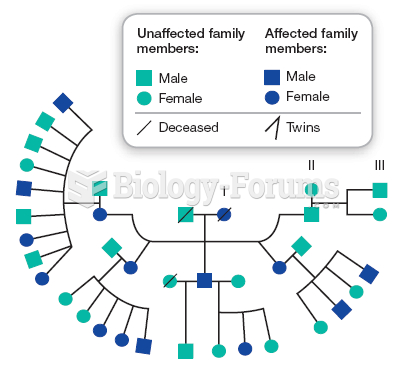Answer to Question 1
ANS: 1
Feedback
1 The family household is the place where health and illness are produced and thus is an important focus for assessing the family as a unit.
2 Considering complaints of physical problems is a focus of individual assessment.
3 Looking at implications of individual differences between family members focuses the assessment on individuals rather than the family as a unit.
4 Looking at implications of family members' knowledge of the disease process focuses the assessment on individuals rather than the family as a unit.
Answer to Question 2
ANS: 4
Feedback
1 Are you married? How long have you been married? are direct questions asking specific information to determine the presence or absence of a spouse; they do not address family member involvement. It should not be assumed that if the person is married, the family members are involved in his care.
2 Do you have children? How many children do you have? are direct questions asking specific information to determine the presence or absence of children; they do not address family member involvement. It should not be assumed that if the person has children, they are involved in his care.
3 What do you usually have for dinner? Do you sit down with your family for a meal? are direct questions to obtain specific information related to the client and meals; they do not address family member involvement in the disease process. It should not be assumed that if a family shares meals together, the family members are involved in his care.
4 What do you do for yourself? What do your family members do for you? are open ended questions to obtain information about family member involvement in the client's disease process. It is important to identify the degree of involvement of multiple members who may contribute to the health or well-being of individuals within families.







